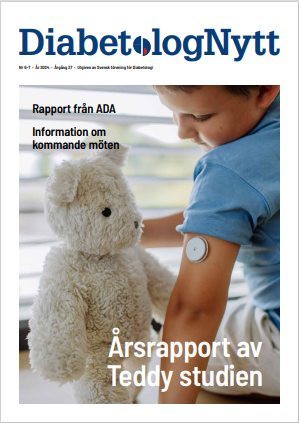Gestational Diabetes, Obesity Impact Pregnancy Outcomes
FRIDAY, March 2 (HealthDay News) — Women with gestational diabetes mellitus (GDM) who are obese have significantly higher odds of adverse pregnancy outcomes, according to findings from the multinational Hyperglycemia and Adverse Pregnancy Outcome (HAPO) Study published online Feb. 22 in Diabetes Care.
To determine associations of GDM and obesity with adverse outcomes, Patrick M. Catalano, M.D., of Case Western Reserve University at MetroHealth Medical Center in Cleveland, and associates analyzed HAPO data on 23,316 women (average age, 29.2 years) from 15 centers in nine countries who took a 75-g oral glucose tolerance test (OGTT) between 24 and 32 weeks of pregnancy.
The researchers found that obesity, defined as body mass index (BMI) ≥33.0 kg/m², and GDM were diagnosed in 13.7 and 16.1 percent of participants, respectively, with an odds ratio (OR) of 2.19 for birth weight greater than 90th percentile for GDM alone, compared with obesity alone (OR, 1.73) and GDM and obesity combined (OR, 3.62). The data showed that women with higher OGTT glucose and maternal BMI had significantly higher odds for newborn body fat, cord serum C-peptide, and birth weight greater than 90th percentile compared to normal/underweight women (64.2 percent of participants) with normal glucose.
”Both maternal GDM and obesity are independently associated with adverse pregnancy outcomes,” the authors write. ”Their combination has a greater impact than either one alone.”
abstract Diabets Care
The Hyperglycemia and Adverse Pregnancy Outcome Study
Associations of GDM and obesity with pregnancy outcomes
Patrick M. Catalano, MD1,
H. David McIntyre, MD2,
J. Kennedy Cruickshank, MD3,
David R. McCance, MD4,
Alan R. Dyer, PHD5,
Boyd E. Metzger, MD6⇓,
Lynn P. Lowe, PHD5,
Elisabeth R. Trimble, MD7,
Donald R. Coustan, MD8,
David R. Hadden, MD4,
Bengt Persson, MD, PHD9,
Moshe Hod, MD10,
Jeremy J. N. Oats, MD11 and
for the HAPO Study Cooperative Research Group
1Reproductive Biology, Case Western Reserve University at MetroHealth Medical Center, Cleveland, Ohio
2Endocrinology and Obstetric Medicine, Mater Medical Research Institute, University of Queensland, Brisbane, Australia
3Diabetes and Clinical Endocrinology, University of Manchester and Royal Infirmary, Manchester, U.K.
4Regional Centre for Endocrinology and Diabetes, Royal Victoria Hospital, Belfast, Northern Ireland, U.K.
5Department of Preventive Medicine, Northwestern University Feinberg School of Medicine, Chicago, Illinois
6Division of Endocrinology, Metabolism and Molecular Medicine, Northwestern University Feinberg School of Medicine, Chicago, Illinois
7Department of Clinical Biochemistry, Queen’s University Belfast, Belfast, Northern Ireland
8Division of Maternal Fetal Medicine, Women and Infants’ Hospital of Rhode Island, Warren Alpert Medical School of Brown University Medical School, Providence, Rhode Island
9Department of Pediatrics, Karolinska Institute, Stockholm, Sweden
10Department of Obstetrics and Gynecology, Helen Schneider Hospital for Women, Rabin Medical Center-Sackler Faculty of Medicine, Tel-Aviv University, Petah-Tiqva, Israel
11Obstetric Medicine, Mater Misericordiae Mothers’ Hospital-University of Queensland, Brisbane, Australia
Abstract
OBJECTIVE To determine associations of gestational diabetes mellitus (GDM) and obesity with adverse pregnancy outcomes in the Hyperglycemia and Adverse Pregnancy Outcome (HAPO) Study.
RESEARCH DESIGN AND METHODS Participants underwent a 75-g oral glucose tolerance test (OGTT) between 24 and 32 weeks. GDM was diagnosed post hoc using International Association of Diabetes and Pregnancy Study Groups criteria. Neonatal anthropometrics and cord serum C-peptide were measured. Adverse pregnancy outcomes included birth weight, newborn percent body fat, and cord C-peptide >90th percentiles, primary cesarean delivery, preeclampsia, and shoulder dystocia/birth injury. BMI was determined at the OGTT. Multiple logistic regression was used to examine associations of GDM and obesity with outcomes.
RESULTS Mean maternal BMI was 27.7, 13.7% were obese (BMI ≥33.0 kg/m2), and GDM was diagnosed in 16.1%. Relative to non-GDM and nonobese women, odds ratio for birth weight >90th percentile for GDM alone was 2.19 (1.93, 2.47), for obesity alone 1.73 (1.50, 2.00), and for both GDM and obesity 3.62 (3.04, 4.32). Results for primary cesarean delivery and preeclampsia and for cord C-peptide and newborn percent body fat >90th percentiles were similar. Odds for birth weight >90th percentile were progressively greater with both higher OGTT glucose and higher maternal BMI. There was a 339-g difference in birth weight for babies of obese GDM women, compared with babies of normal/underweight women (64.2% of all women) with normal glucose based on a composite OGTT measure of fasting plasma glucose and 1- and 2-h plasma glucose values (61.8% of all women).
CONCLUSIONS Both maternal GDM and obesity are independently associated with adverse pregnancy outcomes. Their combination has a greater impact than either one alone.
Received September 14, 2011.
Accepted January 4, 2012.
Nyhetsinfo
www red DiabetologNytt





